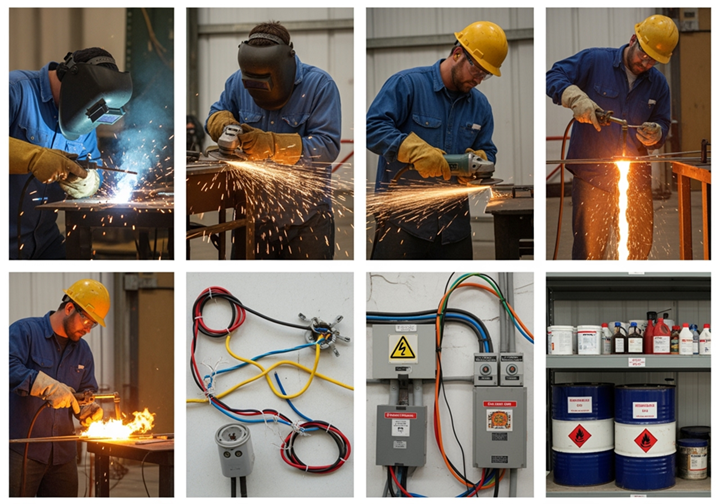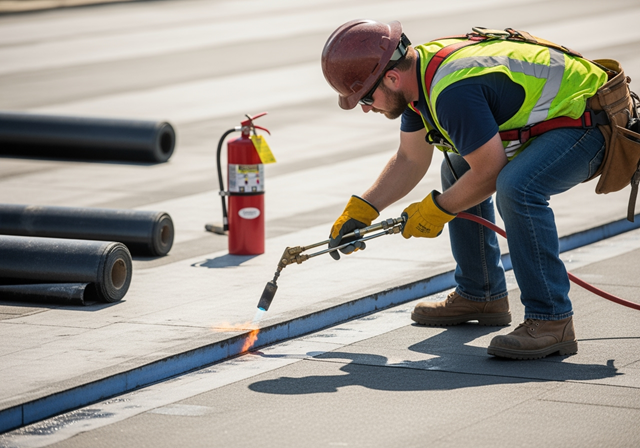Every year, fires on construction sites make headlines, and not in a good way.
 Across major Canadian cities, 20 to 30 fires break out annually in buildings under construction. These are not small incidents. They cost millions of dollars, destroy years of hard work, and, tragically, sometimes take lives.
Across major Canadian cities, 20 to 30 fires break out annually in buildings under construction. These are not small incidents. They cost millions of dollars, destroy years of hard work, and, tragically, sometimes take lives.
Take the Taradale Fire in Calgary (2002). What started as torch work on a condo building under construction spread to three occupied buildings. The result was $66 million in damage and the heartbreaking loss of two lives, including a nine-year-old girl.
Or the Mount Royal Hotel fire in Banff (2016). A propane torch sparked a blaze that tore through the historic hotel’s top floor, eventually leading to a $50 million lawsuit.
Both investigations pointed to the same cause: hot work gone wrong.
What Exactly Is “Hot Work”?
Hot work refers to any task that generates heat, sparks, or open flames. On construction sites, that often means:
- Torch-applied roofing or waterproofing
- Oxy-fuel cutting
- Welding, soldering, or grinding
- Melting tar or asphalt
- Paint removal
These activities are common and necessary. But they are also dangerous.
In the U.S., the risk is even clearer. Between 2017 and 2021, U.S. fire departments responded to an average of 3,396 hot work fires each year. That adds up to:
- 19 deaths annually
- 120 injuries annually
- $292 million in property damage every year
Why Construction Sites Are Especially Vulnerable
You might be wondering: Why do these fires get so out of hand? Here are some key reasons construction projects are a perfect storm for fire risk:
- Combustible materials everywhere. Lumber, paper, solvents, packaging, and other fuel sources are always present.
- Hidden hazards. Sparks and hot slag can slip into cracks or voids, igniting hours later.
- Incomplete buildings. Unfinished walls and stairwells can act like wind tunnels, accelerating flames.
- Changing work. Hazards shift daily, from torch work today to welding or lacquering tomorrow.
- No fire protection. Many buildings under construction do not yet have sprinklers, walls, or water systems in place.
- After-hours risk. Nearly 60 percent of construction fires start overnight or on weekends, when no one is around to catch a smoldering spark.
And let’s not forget the roof. It is one of the most common ignition points. Dry wood, insulation, and torches make it a dangerous mix, especially around detailed spots like flashings, perimeters, and penetrations where sparks can slip inside.
Beyond Fires: Other Dangers of Hot Work
It is not just about fire. Hot work also brings risks such as:
- Severe burns
- Eye damage from sparks
- Exposure to hazardous fumes
That is why safety cannot be an afterthought.
How to Make Hot Work Safer on Site
Completely banning hot work is not realistic. But managing the risk is. Here are proven ways to protect workers and projects:
- Hot Work Permits – Require a permit system and assign a dedicated fire watch, even for hours after the work is complete.
- Site Assessment – Know what is on site. Store fuels, chemicals, and solvents properly.
- Ventilation – Prevent toxic fume buildup by ensuring adequate airflow.
- Worker Training – Make sure crews understand hazards and control measures.
- Housekeeping – Clear out wood scraps, packaging, and other waste that fuels fire.
- Regular Inspections – Check for hazards, dust accumulation, and ensure extinguishers are in place.
- Fire Extinguishers – Keep them on every stair landing and exit point. Set a clear rule: if you move one, put it back. If you use one, report it.
The Bottom Line
Hot work is part of building and maintaining structures, but it does not have to be a gamble. With the right safety protocols such as permits, training, fire watches, and consistent inspections, the risk of fire, injury, and loss can be dramatically reduced.
At Bow Valley Safety, we help construction teams put these systems into practice. From digital safety systems to custom safety consultations, our goal is to make it easier for you to protect your site, your workers, and your investment.

